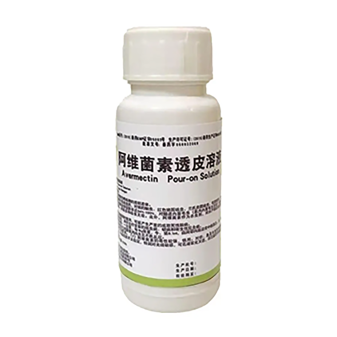- Afrikaans
- Albanian
- Amharic
- Arabic
- Armenian
- Azerbaijani
- Basque
- Belarusian
- Bengali
- Bosnian
- Bulgarian
- Catalan
- Cebuano
- Corsican
- Croatian
- Czech
- Danish
- Dutch
- English
- Esperanto
- Estonian
- Finnish
- French
- Frisian
- Galician
- Georgian
- German
- Greek
- Gujarati
- Haitian Creole
- hausa
- hawaiian
- Hebrew
- Hindi
- Miao
- Hungarian
- Icelandic
- igbo
- Indonesian
- irish
- Italian
- Japanese
- Javanese
- Kannada
- kazakh
- Khmer
- Rwandese
- Korean
- Kurdish
- Kyrgyz
- Lao
- Latin
- Latvian
- Lithuanian
- Luxembourgish
- Macedonian
- Malgashi
- Malay
- Malayalam
- Maltese
- Maori
- Marathi
- Mongolian
- Myanmar
- Nepali
- Norwegian
- Norwegian
- Occitan
- Pashto
- Persian
- Polish
- Portuguese
- Punjabi
- Romanian
- Russian
- Samoan
- Scottish Gaelic
- Serbian
- Sesotho
- Shona
- Sindhi
- Sinhala
- Slovak
- Slovenian
- Somali
- Spanish
- Sundanese
- Swahili
- Swedish
- Tagalog
- Tajik
- Tamil
- Tatar
- Telugu
- Thai
- Turkish
- Turkmen
- Ukrainian
- Urdu
- Uighur
- Uzbek
- Vietnamese
- Welsh
- Bantu
- Yiddish
- Yoruba
- Zulu
ನವೆಂ . 15, 2024 17:11 Back to list
sodium phosphate vial
Understanding Sodium Phosphate Vials Uses, Preparation, and Considerations
Sodium phosphate is a critical compound used widely in various medical and pharmaceutical applications. It exists in several forms, including sodium phosphate vials, which are specifically manufactured to ensure stability, ease of use, and safe delivery of the compound. This article will explore the significance of sodium phosphate vials, their uses, preparation, and considerations for safe handling.
What is Sodium Phosphate?
Sodium phosphate refers to a group of phosphate salts of sodium, commonly used in pharmaceuticals, food additives, and laboratory reagents. The most prevalent forms are monosodium phosphate (NaH2PO4) and disodium phosphate (Na2HPO4), among others. These compounds serve various functions, including buffer agents, electrolyte replenishment, and laxatives in medical treatments.
Uses of Sodium Phosphate Vials
Sodium phosphate vials are primarily utilized in intravenous (IV) therapy for patients who require rapid correction of electrolyte imbalances. Sodium phosphate acts as a potent source of both sodium and phosphate ions, which are essential for numerous physiological processes, including energy metabolism, cellular signaling, and bone health. Some of the key uses include
1. Electrolyte Replacement Sodium phosphate vials are administered to patients experiencing low sodium or phosphate levels, often due to conditions such as malnutrition, renal issues, or prolonged vomiting. Proper electrolyte balance is crucial as it affects heart function, muscle contraction, and overall cellular operations.
2. Bowel Preparation In preparation for certain diagnostic procedures, sodium phosphate solutions can serve as effective bowel cleansers, helping to clear the intestines prior to colonoscopies or surgical interventions.
Preparation and Administration of Sodium Phosphate Vials
Sodium phosphate vials must be prepared and administered with care to avoid potential complications. In a clinical setting, the following steps are typically followed
sodium phosphate vial

1. Check the Vial Healthcare professionals should inspect the vial for any signs of damage or contamination before use. It is crucial to ensure the integrity of the product, as compromised vials can lead to adverse effects.
2. Assemble Equipment A sterile environment is vital. Appropriate syringes, needles, and IV setups should be used to minimize the risk of infection during administration.
3. Dilution if Necessary Depending on the concentration of sodium phosphate, healthcare providers may need to dilute the solution to ensure it is safe for administration. This is particularly important when dealing with sensitive patient populations, such as infants or elderly patients.
4. Monitor Patient Response After administration, patients should be closely monitored for signs of hyperphosphatemia or hypernatremia, conditions characterized by excessive phosphate or sodium levels, respectively. Blood chemistry tests may be employed frequently to ensure patients maintain a proper balance.
Considerations for Safe Use
While sodium phosphate vials are invaluable in clinical applications, there are several considerations to keep in mind
- Dosage Guidelines Adhering to prescribed dosages is essential to avoid complications. Excessive intake can result in serious health risks, including kidney damage or cardiovascular issues.
- Patient Conditions Certain patient populations, such as those with heart disease or chronic kidney disease, may be at higher risk for adverse reactions. It is essential to assess the individual’s medical history and current health status prior to administration.
- Storage Requirements Sodium phosphate vials should be stored according to manufacturer guidelines, typically in a cool, dry place. Improper storage can affect the efficacy of the product and its safety for patient use.
Conclusion
Sodium phosphate vials play a vital role in modern medicine, facilitating electrolyte balance, providing effective bowel preparation, and serving as critical components in various laboratory applications. Understanding their uses, proper preparation, and safety considerations enhances their effectiveness and minimizes potential risks. As healthcare continues to evolve, the importance of such compounds and their delivery methods will remain crucial in providing optimal patient care.
-
Guide to Oxytetracycline Injection
NewsMar.27,2025
-
Guide to Colistin Sulphate
NewsMar.27,2025
-
Gentamicin Sulfate: Uses, Price, And Key Information
NewsMar.27,2025
-
Enrofloxacin Injection: Uses, Price, And Supplier Information
NewsMar.27,2025
-
Dexamethasone Sodium Phosphate Injection: Uses, Price, And Key Information
NewsMar.27,2025
-
Albendazole Tablet: Uses, Dosage, Cost, And Key Information
NewsMar.27,2025













